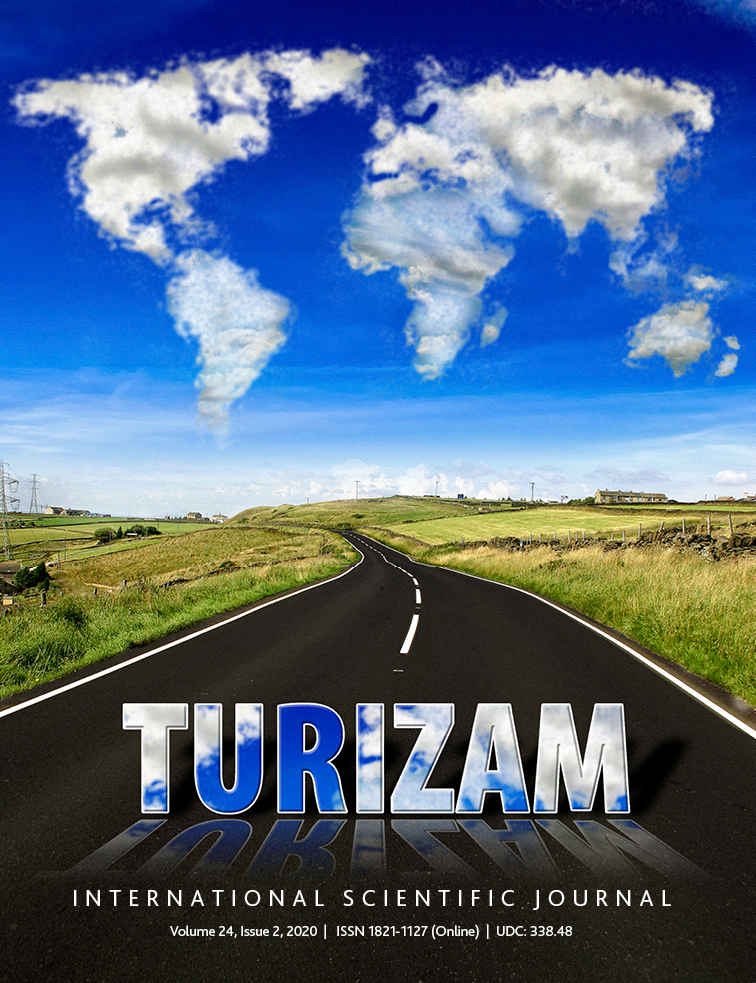Role of human resources in the tourism industry with special reference to Jammu and Kashmir
Abstract
Abstract: Tourism, nowadays is one of the most preferred and popular ways of spending leisure time. The natural urge and appetite of every human being for gaining new experiences and eagerness to get entertained and educated are the main drivers of tourism. It is one of the largest and fastest-growing economic activities, directly concerned with generating services, products, employment, and investments. It is a dynamic and competitive industry and constantly needs to adapt to the changing needs and desires of its customers. Tourism being a service industry is largely driven by its human resources, wherein they play a very crucial role in its growth and development. It is such a resource of an organization that appreciates and advances with time and supports the organization in executing its policies, strategies, and programmes. Tourists visit a particular destination because of its inherent natural or cultural value, historical significance, natural beauty, offering leisure, adventure, and amusement and all such things, as a gift of nature can’t be found at one place in the whole world, but in the state of Jammu and Kashmir(J&K), known for its scenic beauty and fascinating climate. Tourism is one of the most fascinating industries of the J&K economy wherein the role of its human resources is quite promising and of utmost importance for its growth and development. This paper is an endeavor to highlight the role and significance of human resources in the growth and development of the tourism industry and the role they play in promoting tourism with special reference to J&K state.
References
REFERENCES:
Armstrong, M., Taylor, S. 2014. Armstrong's handbook of human resource management practice. Kogan Page.
Baum, T.2007. Human resources in tourism: Still waiting for change. Tourism Management 28(6), 1383-1399.
Baum, T.2012. Human resource management in tourism: a small island perspective. International Journal of Culture, Tourism, and Hospitality Research 6(2), 124-132.
Bhat, Z.A. 2013. Tourism Industry And Pilgrimage Tourism In Jammu And Kashmir: Prospects And Challenges, International Journal of Research In Management & Technology 2,105-113.
Chhabra, T.N. 2005. Human Resource Management: Concepts and Issues. Delhi: Dhanpat Rai & Co (P) Ltd.
Directorate of Economics & Statistics. 2016. Economic Survey. J&K: Government of Jammu & Kashmir
Gokovali, U., Bahar, O. 2006. Contribution of Tourism to Economic Growth: A Panel Data Approach. Anatolia: An International Journal of Tourism and Hospitality Research 17(2), 1-13.
.Kusluvan, S., Kusluvan, Z., Ilhan, I., Buyruk, L. 2010. The human dimension: A review of human resources management issues in the tourism and hospitality industry. Cornell Hospitality Quarterly 51(2), 171-214.
Mathieson, A., Wall, G. 1982. Tourism: Economic, physical, and social impacts. New York: Longman.
Mir, H.A. 2014. Impact of Tourism Industry on Economic Development of Jammu International Journal of Scientific & Engineering Research 5 (6), 592-598.
Muganda, M., Sirima, A., Ezra, P. M. 2013. The role of local communities in tourism development: Grassroots perspectives from Tanzania. Journal of Human Ecology 41(1), 53-66.
Mukhtar, S. 2013. Sustainable Tourism Development with Special Reference to Jammu and Kashmir.International Journal of Applied Financial Management Perspectives 2(2), 419-424.
Pfeffer, J. 1998. The human equation: Building profits by putting people first. Boston: Harvard Business School Press.
Prasad, L.M. 2005. Human Resource Management. New Delhi: Sultan Chand & Sons
Freeman, R.E.1984). Strategic Management: A Stakeholder Approach. New York: Cambridge University Press.
Sharma, R., Sharma, V.K., Waris, V.I.S. 2012. Impact of Peace and Disturbances on Tourism and Horticulture in Jammu and Kashmir. International Journal of Scientific and Research Publications 2(6), 1-7.
Sharma, V., Dogra, J. 2012. Stakeholders’ Role In Sustainable Tourism Development: A Case Study Of North East And Ladakh: International journal of Research in Commerce & Management 3(3), 76-79.
Singh, K., Unjum, I. 2016. Tourism in Jammu and Kashmir economy: Role and performance. Journal of Economic & Social Development 12(2), 112-123.
World Tourism Organization Annual Report 2016. Reteieved from
http://cf.cdn.unwto.org/sites/all/files/pdf/annual_report_2016_web_0.pdf
World Travel and Tourism Council. Travel and Tourism Economic Impact 2016. Retrieved from
https://www.wttc.org//media/files/reports/economic%20impact%20research/regions%202016/world2016.pdf

